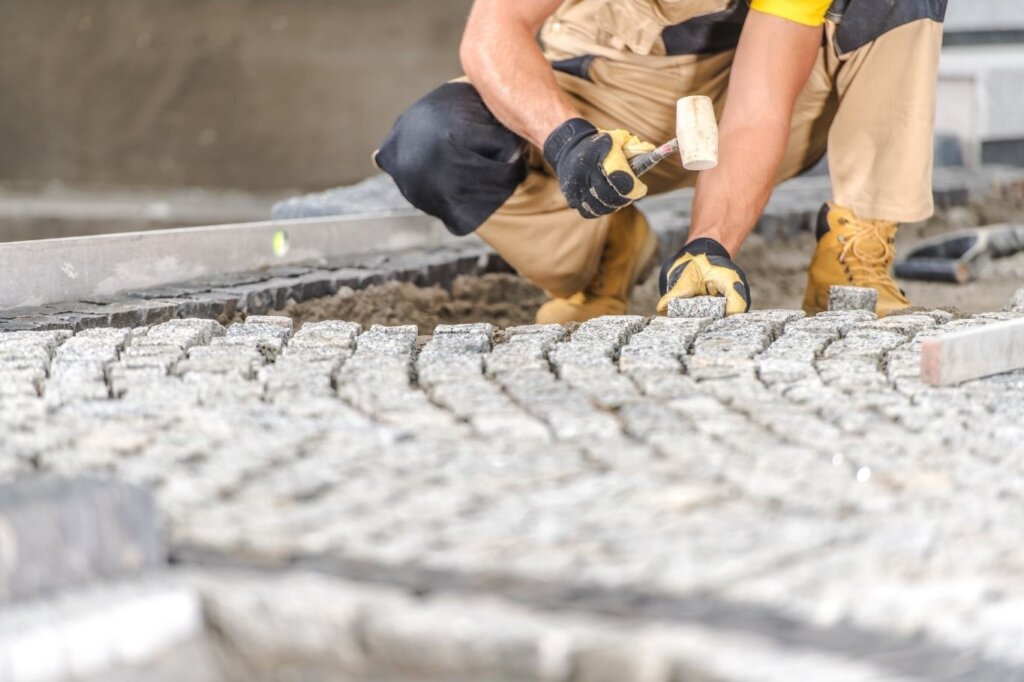Building a driveway on your plot of land is an essential aspect of property development and can significantly enhance the overall aesthetics and functionality of your home. However, with a plethora of options available in the market, choosing the best way to build a driveway can be quite overwhelming. In this ultimate guide, I will provide you with a comprehensive overview of the various materials used for driveways, their costs, advantages, and the factors to consider when making a decision. By the end of this guide, you will have a clear understanding of the best way to build a driveway that suits your needs and preferences.
The history of driveway materials in America – From Stone to Concrete
Driveways have come a long way since the early days of horse-drawn carriages. In the past, stone was the primary material used for driveways due to its durability and availability. As time progressed, the advent of the automobile led to the development of more suitable materials for driveways. Concrete emerged as a popular choice due to its strength and longevity. Over the years, asphalt and gravel also gained popularity as affordable and versatile options.
The top 3 materials that work best on driveways today
When it comes to building driveways today, three materials stand out as the most popular choices: concrete, asphalt, and pavers. Concrete driveways are known for their durability and low maintenance requirements. They can withstand heavy loads and are resistant to cracking. Asphalt driveways, on the other hand, offer a smoother surface and are relatively more affordable. Pavers, made from materials such as brick or stone, provide a visually appealing option and can be customized to match the aesthetics of your home.
Comparing the cost of different driveway materials
The cost of building a driveway varies significantly depending on the material chosen. Concrete driveways tend to be the most expensive option due to the labor-intensive installation process and the high cost of materials. Asphalt driveways are relatively more cost-effective, making them a popular choice for homeowners on a budget. Pavers, while offering aesthetic appeal, can be the most expensive option depending on the type of material used.
The most cost-effective material to build a driveway with
If cost-effectiveness is a primary concern, asphalt driveways are often considered the best choice. They offer a balance between affordability and durability, making them a popular option for many homeowners. Asphalt is a petroleum-based material, which means its cost can fluctuate based on oil prices. However, compared to concrete and pavers, asphalt driveways are generally more budget-friendly to install and maintain in the long run.
Alternative materials for building driveways and their advantages
While concrete, asphalt, and pavers are the top choices for driveways, there are alternative materials worth considering. Gravel driveways are a more affordable option that provides good drainage and a rustic appearance. They require periodic maintenance to replenish the gravel and control weed growth. Grass driveways, also known as permeable driveways, offer an environmentally friendly option that allows rainwater to seep through and recharge the groundwater. These driveways require regular mowing and maintenance to keep the grass in good condition.
Factors to consider when choosing a driveway material
When selecting a material for your driveway, several factors should be taken into account. The climate in your area plays a crucial role, as certain materials may not withstand extreme temperatures or frequent freeze-thaw cycles. The expected traffic load on your driveway is another important consideration. If you anticipate heavy vehicle usage, materials like concrete or asphalt would be more suitable. Additionally, factors such as maintenance requirements, installation process, and the overall aesthetic appeal should also be considered to ensure the longevity and functionality of your driveway.
Steps to build a driveway on your plot of land
Once you have chosen the material for your driveway, it is essential to follow the proper steps to ensure a successful installation. The first step involves assessing the site and preparing the ground by removing any vegetation or debris. Next, the area is excavated to the desired depth, allowing space for the base and drainage materials. A solid base layer is then created using crushed stone or gravel, ensuring proper compaction. The chosen driveway material is then installed, whether it be concrete, asphalt, pavers, or an alternative option. Finally, the driveway is properly sealed and cured, providing protection against weather elements and enhancing its durability.
Maintaining and caring for your driveway
To ensure the longevity and appearance of your driveway, regular maintenance and care are essential. For concrete and asphalt driveways, sealing every few years can help prevent cracks and deterioration. Regular cleaning, removing debris, and addressing stains promptly can also prolong the lifespan of your driveway. Pavers require periodic re-sanding and occasional power washing to maintain their appearance. Additionally, following proper snow removal techniques, such as using non-abrasive tools and avoiding harsh chemicals, can prevent damage to your driveway during winter months.
Conclusion: Choosing the best way to build a driveway
Building a driveway on your plot of land is a significant investment that can greatly enhance the functionality and curb appeal of your property. By considering factors such as cost, durability, maintenance requirements, and aesthetic preferences, you can make an informed decision on the best way to build your driveway. Whether you opt for traditional materials like concrete and asphalt or explore alternative options like gravel or grass driveways, choosing the right material and following proper installation and maintenance practices will ensure a durable and visually appealing driveway for years to come.





